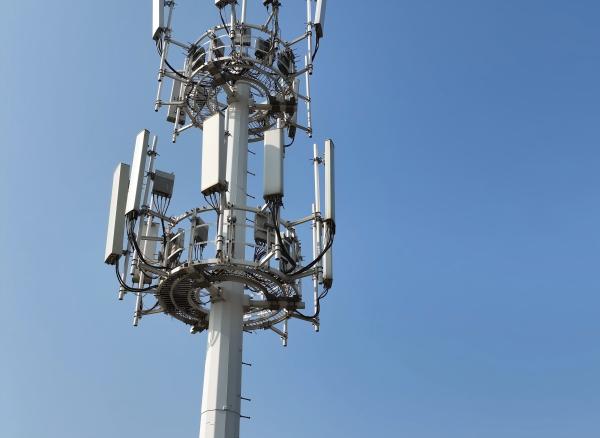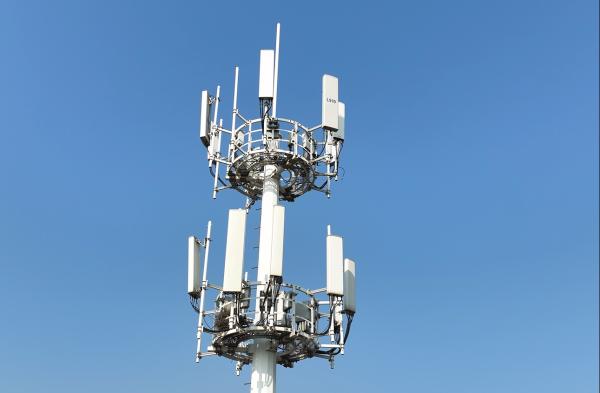Anticipating Structural Challenges from Terahertz Bands
and Ultra-Massive MIMO Arrays
As 6G technology accelerates toward commercialization, its ultra-high-speed, low-latency, and hyper-connected vision demands radical upgrades to telecom infrastructure—especially monopole towers. These slim, space-efficient structures must evolve to support revolutionary technologies like terahertz (THz) frequency bands and ultra-massive MIMO (Multiple-Input Multiple-Output) antenna arrays. This blog explores the critical technical advancements required to future-proof monopole towers for 6G's disruptive demands.

The Challenge:
6G's use of terahertz frequencies (300 GHz–3 THz) promises speeds up to 1 Tbps but introduces severe propagation limitations:
Short transmission range: THz signals attenuate rapidly in air, with effective distances often below 100 meter.
Environmental sensitivity: Obstacles like rain, foliage, and even humidity can degrade signal integrity.
Structural Implications for Monopole Towers:
Ultra-Dense Deployment: To compensate for short coverage, towers must be deployed 10–20x more densely than 5G networks, requiring miniaturized, low-footprint designs to fit urban and rural landscapes.
Height Optimization: Taller towers (e.g., 60–100 meters) may extend line-of-sight coverage, but wind load calculations and foundation stability become critical.
Material Innovations: High-strength, lightweight alloys (e.g., carbon fiber composites) will reduce weight while maintaining structural resilience against increased wind shear.
The Challenge:
6G's ultra-massive MIMO systems may deploy 1,000+ antenna elements per array, enabling spatial multiplexing for unprecedented capacity. However, this poses:
Weight and size burdens: Traditional steel monopoles struggle to support bulky arrays.
Signal interference risks: Close-proximity antennas require precise alignment to avoid mutual coupling.
Structural Adaptations:
Distributed Antenna Systems (DAS): Modular tower designs will segment arrays across multiple tiers, reducing concentrated weight and enabling phased upgrade.
Active Cooling Integration: High-frequency antennas generate significant heat, necessitating embedded liquid-cooling channels or passive heat-dissipation coating.
Dynamic Beamforming Support: Towers must accommodate reconfigurable intelligent surfaces (RIS) and AI-driven beam steering, requiring adaptive mounting interfaces and power supply redundancy.

a. AI-Driven Structural Health Monitoring
IoT Sensors: Embedding strain gauges, tilt sensors, and corrosion detectors will enable real-time monitoring of tower integrity, especially critical for densely deployed THz towers.
Predictive Maintenance: Machine learning algorithms can forecast fatigue points, reducing downtime in extreme weather or high-load scenario.
b. Energy-Efficient Power Systems
Solar Integration: Thin-film solar panels on tower surfaces can offset energy demands of power-hungry THz transceiver.
Wireless Power Transfer: Resonant inductive coupling could eliminate cables for peripheral IoT devices, simplifying tower maintenance.
c. Multi-Functional Infrastructure
Integrated Sensing and Communication (ISAC): Towers will host radar-like sensors for environmental monitoring (e.g., weather, traffic), requiring multi-port RF interfaces and electromagnetic shielding.
Satellite Backhaul Compatibility: Support for low-earth orbit (LEO) satellite links demands ultra-stable mounting platforms to minimize signal jitte.
Global Standardization: Aligning with ITU and 3GPP guidelines for THz band allocation and MIMO configurations will ensure interoperability.
Sustainable Materials: Recyclable steel alloys and anti-corrosion nanocoatings will extend tower lifespans in coastal or industrial zone.
Aesthetic Integration: Stealth designs (e.g., faux tree trunks, LED-lit pylons) will mitigate visual pollution in urban area.
6G monopole towers are no longer passive steel columns but active, intelligent nodes in a global communication ecosystem. By prioritizing terahertz-ready miniaturization, ultra-massive MIMO adaptability, and AI-driven resilience, operators can ensure these structures withstand 6G's technical and environmental rigors.
At Altai Tower, we're pioneering next-gen monopole solutions that blend cutting-edge materials, modular architectures, and sustainable practices. Ready to future-proof your network? Contact us to explore tailored 6G tower designs.
Learn more at www.alttower.com